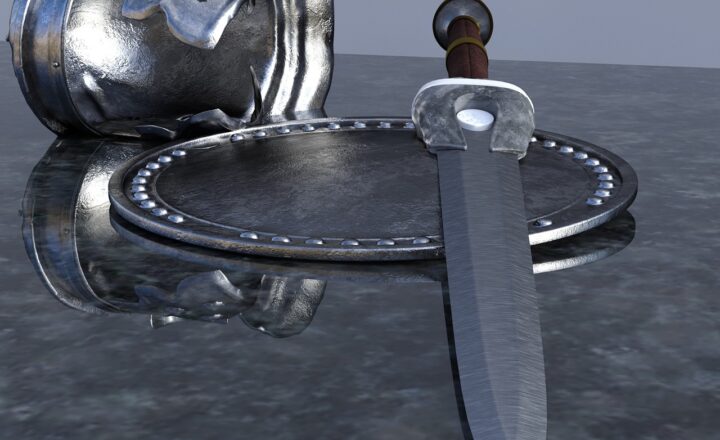The Evolution of Warfare: A Comprehensive Look at the Weapons That Changed History
November 18, 2024

Warfare has played a pivotal role in shaping human history, influencing everything from the establishment of empires to the development of technologies we’ve come to rely on in everyday life. Weapons, the tools of this deadly trade, have evolved dramatically over the centuries. From primitive stone tools to sophisticated missiles, the journey of weaponry reflects the ingenuity and brutality of humankind.
1. The Dawn of Warfare: Prehistoric and Ancient Weapons
The story of warfare begins with early humans using rudimentary weapons for hunting and defense against rival groups. The earliest weapons included:
- Clubs and Stones: These were the first tools for combat, often made from heavy materials that could inflict significant damage.
- Spears: Made from sharpened wood or stone, spears became versatile tools for both hunting and warfare, allowing for greater reach in battle.
- Bows and Arrows: The invention of the bow around 3000 BC enabled humans to strike from a distance, revolutionizing hunting and combat tactics.
As civilizations developed, so too did their weaponry. Ancient cultures began using metal to craft more durable and effective weapons:
- Swords: The introduction of bronze and later iron transformed swords into key weapons of warfare, with designs like the Roman gladius becoming iconic.
- Chariots: Used by ancient Egyptians and Hittites, chariots provided mobility and speed on the battlefield, allowing for coordinated attacks.
This period set the stage for the significant developments to come in warfare as societies became increasingly complex and organized.
2. The Medieval Age: Armor and Siege Weaponry
The medieval period saw warfare evolve significantly, driven by advancements in technology and the need for stronger defenses. Two of the most notable developments included:
- Fighting Cavalry and Knights: Heavily armored knights became dominant on the battlefield, leading to the development of more effective weapons like lances and longswords.
- Siege Weaponry: The rise of fortified castles led to the creation of siege engines like trebuchets and catapults, which could hurl projectiles over walls and breach defenses.
The introduction of crossbows and early gunpowder weapons also began to shift the dynamics of warfare, laying the foundation for future conflicts.
3. The Age of Gunpowder: Revolutionizing Warfare
The invention of gunpowder in the 9th century dramatically changed how wars were fought. By the 16th century, its impact was visible on battlefields across the globe:
- Muskets and Cannons: These firearms brought about a shift from hand-to-hand combat to ranged warfare, allowing armies to deploy devastating firepower at a distance.
- Fortifications and Artillery: As artillery became more powerful, military architecture evolved, with star forts designed to withstand cannon fire replacing traditional castle designs.
This era led to the emergence of modern military strategies, emphasizing discipline and formation over individual prowess.
4. Industrialization and Modern Warfare
The Industrial Revolution in the 19th century brought about rapid advancements in weapon technology. Key innovations included:
- Rifles and Gatling Guns: The adoption of rifled barrels increased accuracy, while automatic weapons like the Gatling gun changed battlefield dynamics by delivering sustained fire.
- Submarines and Machine Guns: By World War I, machine guns had become standard, leading to trench warfare, while submarines introduced a new dimension to naval engagements.
The impact of these weapons was staggering, leading to unprecedented levels of destruction and loss of life, ultimately shaping international relations for decades to come.
5. The Cold War Era: Nuclear Weapons and Beyond
The aftermath of World War II ushered in the nuclear age, fundamentally altering the global military landscape:
- Nuclear Weapons: The atomic bomb not only ended World War II but also established a new form of warfare where the potential for catastrophic destruction acted as a deterrent against direct conflict between superpowers.
- Advanced Technology in Warfare: The Cold War saw innovations such as missile technology, drone warfare, and the advent of cyber weapons, creating an entirely new battlefield beyond conventional means.
This era forced nations to rethink military strategy and defense, leading to complex geopolitical relationships.
6. The Future of Warfare: Autonomous Weapons and Cyber Warfare
As technology continues to advance, the landscape of warfare is rapidly changing:
- Drone Technology: Unmanned aerial vehicles (UAVs) have taken center stage, providing capabilities for surveillance and targeted strikes with minimal human risk.
- Cyber Warfare: The rise of the internet has introduced a new realm where nations can conduct operations, disrupt communication, and steal sensitive information, often without a single shot being fired.
With these developments come ethical concerns about accountability and the potential for new types of conflict that blur traditional lines of warfare.
Conclusion
The evolution of warfare is a testament to humanity’s relentless pursuit of innovation and superiority. Each weapon, from the earliest stone tools to today’s advanced technologies, tells a story of conflict, power, and the complex relationship between societies. As we gaze into the future, it is crucial to reflect on the lessons of the past and strive for a world where such weapons are no longer needed, emphasizing diplomacy over destruction.
This comprehensive look at the weapons that changed history reminds us that while technology continues to evolve, the overarching themes of human conflict remain timeless.







